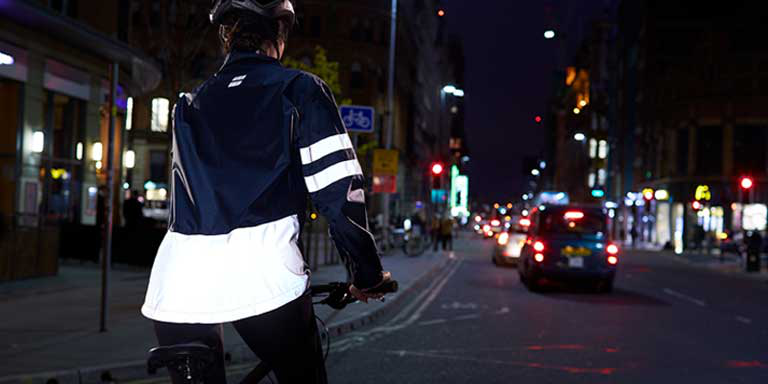If Faridabad-based PP Singh has his way, bicycles wouldn’t be out on roads without retro-reflective tape affixed on them. Singh sees it as an effective tool on bicycles that can help motorists identify them and prevent a crash from taking place.
It all started when he had a narrow escape with an accident on a foggy winter night six years ago. “It was coming back from work. The bicycle in front of me not only lacked illumination but was also black, making it completely impossible for me to spot it, “says Singh, an IT manager and founder of the NGO.
The incident shook Singh. The following day, he started counting the bicycles with reflectors on his way to work and back. He continued the exercise for a month and was shocked to find that a whopping 80 percent cycles on roads did not have reflectors. Since then, he and his NGO team have fixed reflective tapes on more than 1 lakh bicycles in and around Faridabad.
Bicyclists are one of the most vulnerable road users in the country. According to data by the ministry of road transport and highways, bicyclists ’fatalities surged by a whopping 37.7 percent in 2017. In fact, in the six years between 2012 and 2017, as many as 24,755 bicyclists lost their lives in road crashes.
Passionate about his cause, Singh followed it up with a letter to the WHO suggesting reflective tapes as a long-lasting solution for the safety of bicycles. The effectiveness of retro-reflective tapes was also recognized by Union minister for transport and highways, Nitin Gadkari who wrote a letter regarding the same to the minister for consumer affairs, food, and public distribution, Ram Vilas Paswan in 2014. Sadly, the idea has ‘ t yet picked up.
POOR VISIBILITY, THE KEY REASON BEHIND CRASHES
One of the major reasons for crashes involving cyclists is poor visibility. To ensure bicycles remain conspicuous to other road users, especially in the dark, many cycles have a reflector on the rear mudguard. Sadly, the safety tool on the bicycle has never been taken by the riders. “A damaged reflector doesn’t hamper the movement of a cycle, so it not replaced by most cyclists. Even an educated bicyclist doesn’t appreciate its utility and bother replacing it, “adds Singh.
In 2015, the Supreme Court committee on road safety mandated a set of 10 reflectors conforming to ISO 6742-2 standards on different spots on bicycles. The good news is that cycle manufacturers have begun complying with it. Says Abhishek Munjal, director, Hero Cycles, “A set of 10 reflectors are installed across all ranges since 2016 as cyclist safety is of paramount importance for us.”
However, road safety experts aren’t happy. “Bureau of Indian Standards (BIS) recommends equipping bicycles with retro-reflective tapes too. This is very much-needed as reflectors aren’t that effective, “says KK Kapila, chairman, International Road Federation.
In India, bicycles are the most popular transport for commuting to work. A whopping 13 percent or 2.62 crore Indians cycle to work, according to Census 2011.
The retro-reflective tape is a simple and effective solution for a vast chunk of population riding old bicycles. It comes with many benefits:
One, unlike reflectors, the retro-reflective tape is not susceptible to breaking and therefore does not need replacement.
Two, it offers good visibility. A bicycle with a retro-reflective tape is easily visible from 100-200 meters, a good enough distance to be spotted by a motorist. However, for increasing the conspicuity of a bicycle, BIS recommends tapes at specific locations on bicycles. “The tape should conform to BIS specifications. The one that I experimented with, on a patch of road, washed away with just one rain but another one survived extreme weather conditions, has a good hold and even after six years is intact on all bicycles, “says Singh.
Three, it is cost-effective. A high-intensity reflective sticker of size measuring 2”x 2 “costs anywhere around Rs 12-15 against Rs 25-30 for a reflector. Also, reflective tapes are now available in smaller sizes, taking away the pain of buying a complete roll of tape and cutting it proportionately.
With India just two years away from meeting its target of reducing road crashes and fatalities by 50 percent, solutions like retro-reflective tapes can go a long way in making roads safer. What it needs is a concerted last mile effort that will make reflective tape easily accessible to cyclists.

